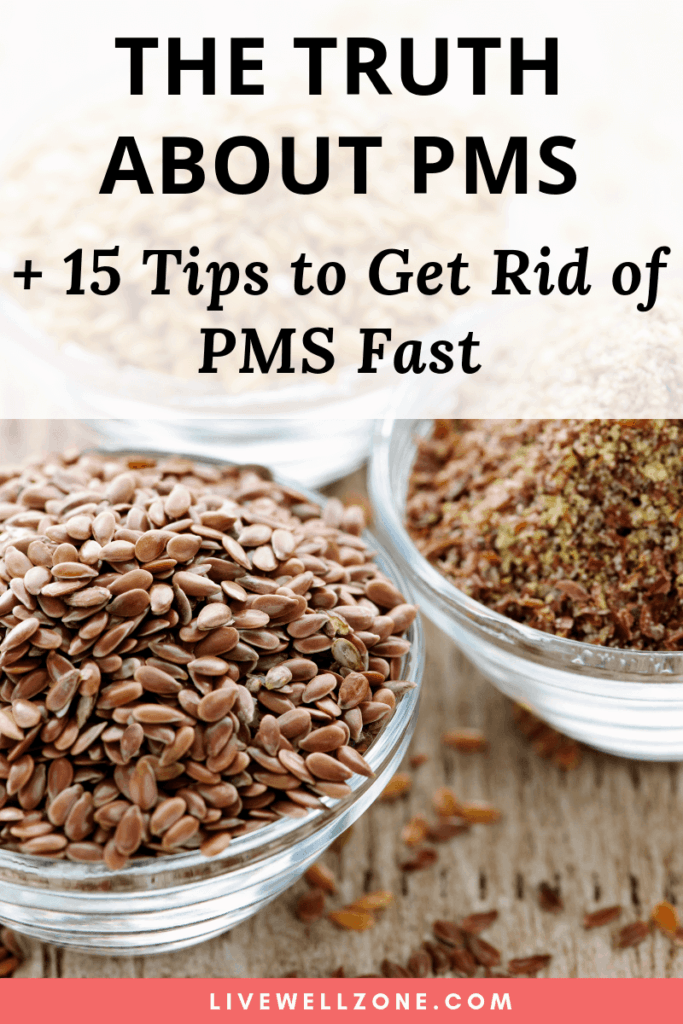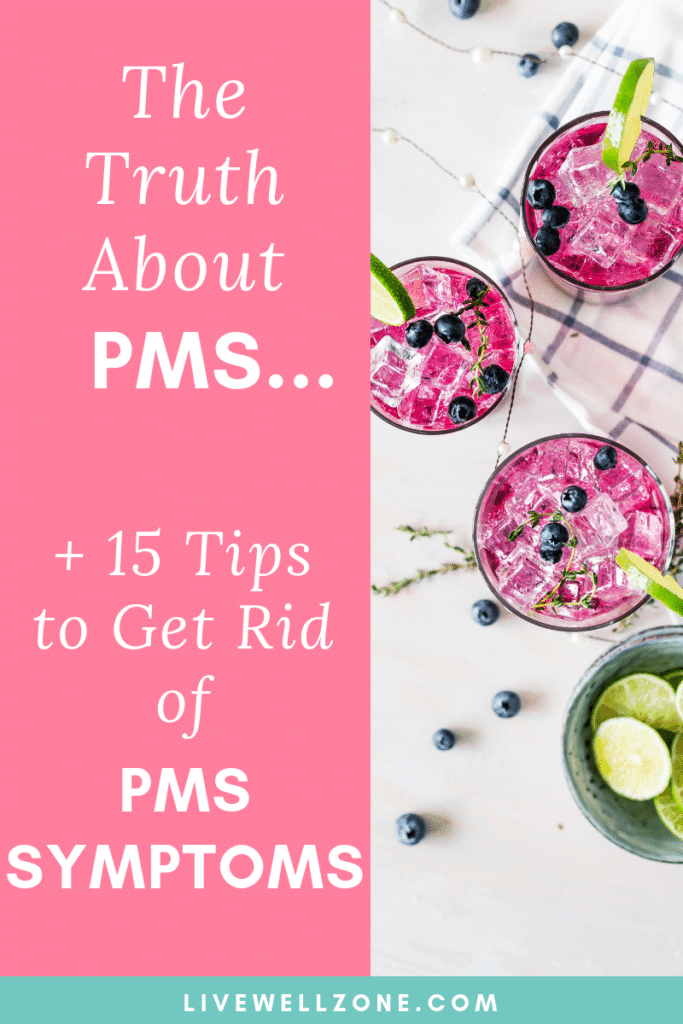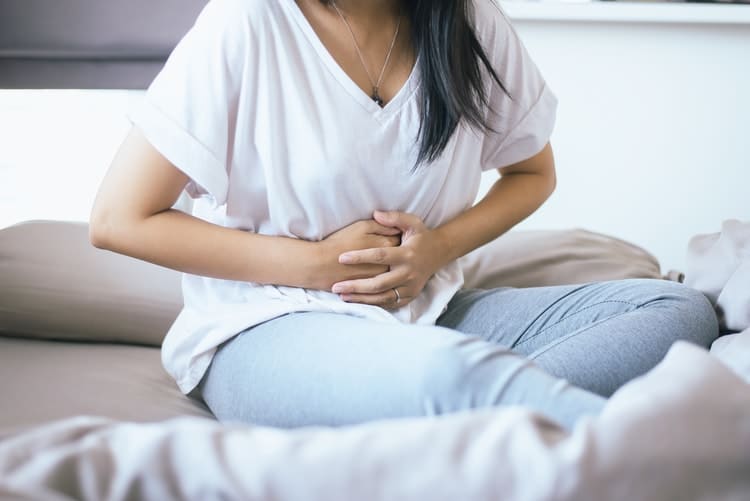
If you’re among the 75% of women who struggles with PMS symptoms every month, it might feel like you are at war with your body.
To add to the frustration, the medical community’s official stance is that the root cause of PMS is unknown (but they do suspect that it is related to hormonal changes).
So, in this post I want to simplify things for you by:
- revealing the real role of hormonal fluctuations.
- showing how lifestyle and food contribute to PMS.
- sharing the best tips for PMS relief.
By the end of this post you will have all the tools, tips and best product recommendations to help you get rid of PMS symptoms for good!
WHAT IS PMS AND WHAT ARE THE MOST COMMON PMS SYMPTOMS?
Technically speaking, PMS (Premenstrual Syndrome) is a group of symptoms that women experience between ovulation and the start of their period.
The general belief is that PMS is caused by hormonal changes or hormonal imbalances that occur throughout the menstrual cycle.
Now, when it comes to PMS symptoms there are 2 main categories: physical and emotional & behavorial.
Here is a breakdown of what both categories of symptoms tend to look like:
Common PMS Symptoms: Physical
- Cramps
- Food cravings
- Acne
- Back pain
- Bloating
- Joint or muscle pain
- Constipation
- Diarrhea
- Headaches
- Migraines
- Fatigue
- Tender breasts
- Hot flashes
- Rapid heartbeat
Common PMS Symptoms: Emotional & Behavorial
- Depression
- Anxiety
- Decreased libido
- Brain fog
- Difficulty concentrating
- Mood swings
- Erratic sleep patterns
- Irritability
- Feeling anti-social or feeling the need to withdraw from personal interactions
Before we move on, it’s important to note two things:
- Even though the symptoms fall into different categories, the root cause (and treatments) are the same.
- Because each person’s body is unique, PMS symptoms vary from one woman to another. And the severity of each pre menstrual symptom also varies from one woman to another.
PMS SYMPTOMS vs. PMDD SYMPTOMS: IS THERE A DIFFERENCE?
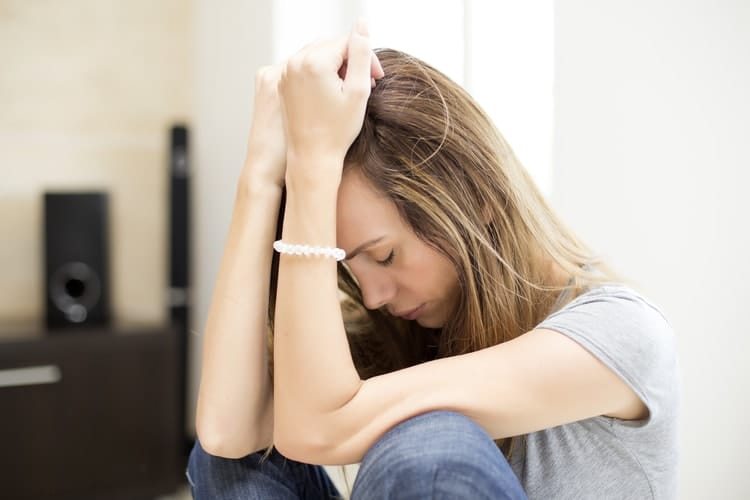
If you’ve ever searched online for “PMS” or “signs of menstrual cycle,” then you have most likely come across the term PMDD.
PMDD (Premenstrual Dysphoric Disorder) is a more severe form of PMS that affects a small percentage of women (5% to 8%).
The term PMDD was created as a subcategory of PMS that covers only the emotional and behavioral symptoms of pre menstrual syndrome.
So, if a woman experiences significant depression or mood swings before her period, then she is said to have PMDD.
What’s interesting about the term PMDD is that its creation opened the doors for antidepressant drugs, like Prozac, to be prescribed for PMS symptoms.
In fact back in 2000, the FDA approved the use of a Prozac-like drug for the treatment of PMDD.
At first glance, this might seem like a good thing. After all, this drug is offering relief to women who are experiencing severe symptoms before their period arrives.
But the irony is that the side effects of anti-depressants are very similar to common PMS symptoms.
To illustrate this, here is a shortlist of Prozac’s side effects:
- Insomnia and difficulty sleeping
- Weight gain
- Constipation
- Decreased sex drive
- Change in appetite
- Food cravings
- Sleep problems
- Anxiety
- …and much more
This list is not very different from common PMS symptoms listed earlier in this article.
Could Antidepressants Trigger PMS Symptoms (Or Worsen Them)?
I mean, let’s think about it…
On one hand, if you already have pre menstrual symptoms, antidepressants can definitely make them worse.
On the other hand, if you are clinically depressed but don’t have PMS symptoms, then antidepressants could actually trigger them!
So, it seems like the creation of the PMDD label may not really be doing much to address the root cause of PMS symptoms after all.
Now, I am not saying that antidepressants don’t have their place or purpose.
But personally, I think it’s wise to weigh all options before relying on a potent drug that has such serious side effects.
WHY TRADITIONAL TREATMENTS FOR PMS SYMPTOMS DON’T (ALWAYS) WORK
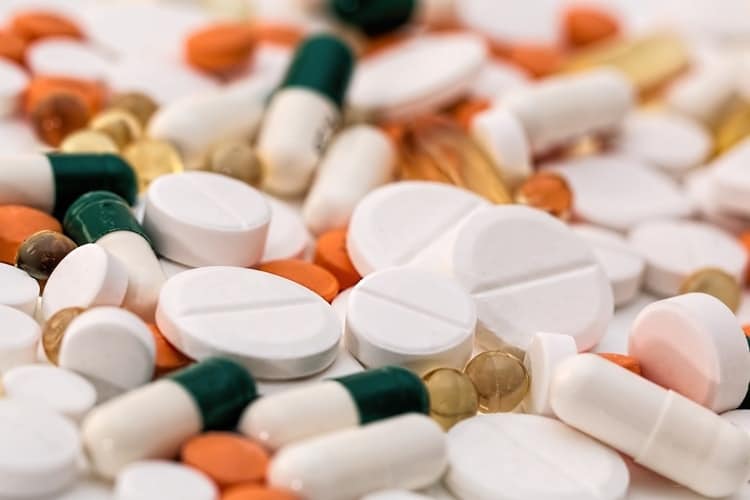
Although the word “symptoms” appears in “premenstrual syndrome,” PMS is not officially considered a disease.
Rather, PMS is officially classified as a syndrome. This matters a whole lot and here is why.
A syndrome is a fancy word for “no one really knows what the hell is going on!”
No, really, I’m not kidding…
You see, when it comes to diseases, the medical profession has a defined set of warning signs, symptoms and tests that are used to make a diagnosis.
For example, there is a test for diabetes, celiac disease and other diseases.
But when it comes to conditions like PMS, there is no specific set of warning signs, symptoms or tests.
PMS symptoms vary from one woman to another, and even, from month to month.
In addition, there is no specific blood test or antibody test, for example, that is done for PMS symptoms.
This has serious implications because if the medical experts don’t agree on what causes premenstrual symptoms, then we cannot fully rely on any drug that is prescribed.
Without a known cause, how can there be a prescription?
Now, based on everything we have looked at, you might be wondering why women are even PMS prescriptions like painkillers, birth control or antidepressants.
I think this statement from a University of Utah vice-chair sums it up:
“Well, we need to be careful with the diagnosis of syndromes. It’s labeling sometimes. It’s not really even a diagnosis….We need to be careful and to be humble with our labeling of diagnoses and syndromes, as giving women a label may make them cause to think of themselves as diseased or abnormal.” – Dr. Kirtly Parker Jones
Wow, that says a lot…so basically this statement reveals that millions of women are being made to feel “less than” because of a label.
Furthermore, it also implies that women with PMS symptoms are somehow “unlucky,” in contrast to the “lucky” ones who don’t have PMS symptoms.
This is incredibly disempowering and explains why women often feel a lot of stress, anxiety and frustration when it comes to PMS symptoms.
So, why did I bring all this up?
It’s to show you that your body is not stubborn or “hormonal.”
In addition, I want to you to realize that when it comes to treatments, always question everything (including what I write on this blog!).
If it doesn’t make sense to you, it probably won’t make sense to your body either!
THE MAIN CAUSE OF PMS SYMPTOMS
The medical community states that PMS symptoms are caused by the hormonal fluctuations that occur during the menstrual cycle.
This theory is based on the following facts:
- In the days leading up to your period, estrogen and progesterone levels rise significantly.
- Estrogen and progesterone peak around days 20 – 22 of your cycle.
- If there is no pregnancy, then both estrogen and progesterone fall sharply.
- At about day 28 of your cycle, both estrogen and progesterone drop to their lowest levels. It’s around this time that your period starts to make its appearance.
The theory is that this series of hormone fluctuations is also what causes PMS symptoms.
But this doesn’t make sense. Here’s why.
The hormonal fluctuations that occur before and after a woman’s period are naturally-designed fluctuations that work to support ovulation and whatever comes after ovulation (i.e. a pregnancy or a period).
So, to say that naturally occurring hormonal fluctuations are to blame for PMS symptoms, is to imply that there is a flaw in how nature designed women’s bodies.
The reality is that as we take a closer look at the modern diet and lifestyle one thing becomes clear: PMS symptoms result from a type of hormonal imbalance known as estrogen dominance.
THE LINK BETWEEN ESTROGEN DOMINANCE AND PMS SYMPTOMS
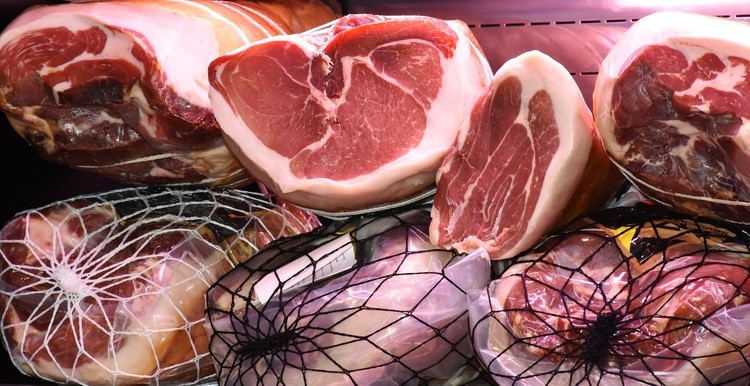
Estrogen dominance is a type of hormonal imbalance that results in estrogen levels being higher than progesterone (and testosterone) levels.
Estrogen levels can increase because of one, or both, of the following factors:
- Exposure to, and ingestion, of excess estrogen.
- Exposure to, and ingestion, of endocrine disruptors (i.e. chemicals that interfere with the endocrine or hormone system).
At this point you might be wondering “where does the excess estrogen and endocrine disruptors come from? And how the heck can I protect myself?”
I am going to address all that in a minute, but before we get to that, it’s helpful for us to take a very brief look at how hormones work and what happens when they stop working correctly.
What Do Hormones Do?
Hormones are chemical messengers that take care of cellular communication i.e. they allow different parts of the body to talk to each other. Hormones affect every process in the body.
The best way to understand hormones is to think of the body as a room.
In that room various people are gathered (in the same way that various hormones gather in your body).
One person in that room might be talking to everyone, or there may be small groups of people having different conversations.
Either way, 2 basic things are essential for effective communication to occur in the room:
- First, everyone in the room must speak the same language.
- Second, while one person is speaking everyone else must listen.
When these two conditions are met, we have a solid foundation for communication.
How Does Hormone Disruption Occur?
Now, let’sbo back to the analogy of a room full of people.
Imagine that one person is speaking to the entire room.
Then suddenly there is interference from another person speaking on the phone…
Or maybe someone starts playing the drums while another also plays the trumpet…
And then another person decides to start playing the drums!
All of this creates interference and totally disrupts the communication.
This is essentially what happens with PMS symptoms.
There is a whole lot of interference in the form of excess estrogen and endocrine disruptors.
With these two things present, estrogen dominance symptoms appear, with PMS being one of the most common.
The Top Sources Of Excess Estrogen And Endocrine Disruptors
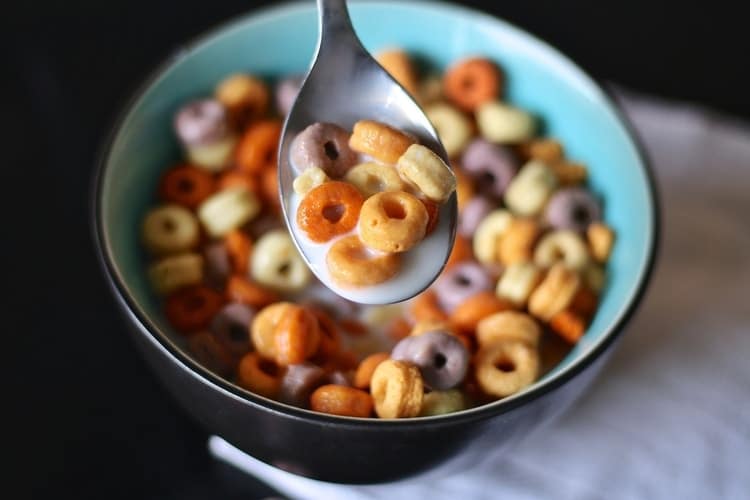
Our environment, water, food and overall lifestyle are the main sources of chemicals that cause estrogen dominance.
More specifically, the following 10 factors contribute significantly to estrogen dominance(and pre menstrual symptoms) :
- Toxic personal care and beauty products
- Pesticides and herbicides in food
- Birth control
- Excess weight (which triggers the production of more estrogen)
- Unfermented soy
- Stress
- Unhealthy liver
- Toxic animal foods
- Polluted water
- Unhealthy gut bacteria
I go into detail about each of the above factors in this article. I strongly suggest you read it to get more information about how these 10 things cause estrogen dominance.
As for the symptoms of estrogen dominance, they include:
- New PMS symptoms or worsening of PMS symptoms
- Bloating
- Acne
- Low sex drive
- Insomnia
- …and much more.
Why Estrogen Dominance Is The Bad Guy
So, as we saw earlier estrogen levels naturally increase in the days leading up to your period.
It is during this time that PMS symptoms show up.
But as we have now seen, we live in an estrogen dominant world.
So…imagine that in the days leading up to your period, you are eating a diet and living a lifestyle that puts you in estrogen dominance.
That excess estrogen, combined with the natural increase in estrogen, will put you in severe estrogen dominance.
It is no surprise that your body starts to struggle or that severe PMS symptoms arise.
So the goal, for us, is to reduce our exposure to excess estrogen and endocrine disruptors.
Once we nail this, PMS symptoms will be a thing of the past!
15 WAYS TO GET RID OF PMS SYMPTOMS
In order to get rid of PMS symptoms, there are three main things that will give your solid results:
- Herbs and Essential Oils.
- Diet.
- Lifestyle.
Herbs and Essential Oils For PMS Symptoms
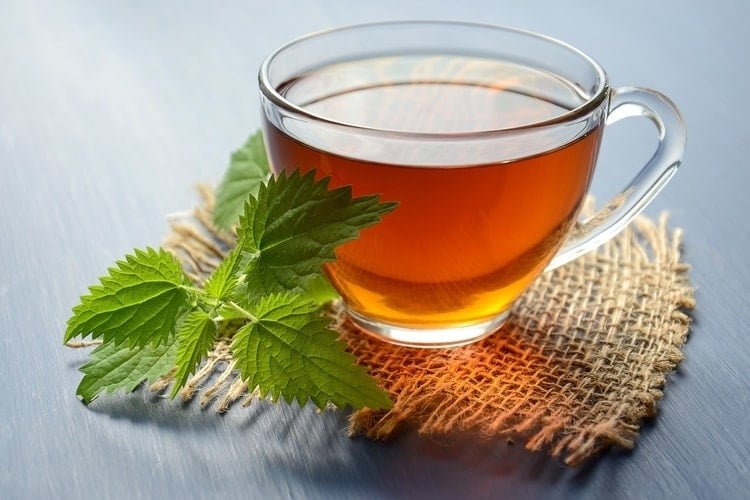
1. Herbs
Herbs are very powerful when it comes to easing PMS symptoms.
There are many to choose from and some of my faves include vitex (chasteberry), raspberry, ginger and cinnamon.
You can buy the herbs individually and make your own pms tea blend at home.
Just be careful with the vitex because it has a really strong, not-so-tasty, flavor. You’ll have to play with the ratios to get a nice taste.
Another option is this pre-made PMS tea blend, which combines the herbs I listed, with others that are designed to soothe pre menstrual symptoms.

2. Essential Oils
Lavender, vitex, ginger, clary sage, peppermint and ylang ylang are some of the essential oils that you can use to improve PMS symptoms.
These oils are known to improve sleep, decrease anxiety, improve focus and ease cramps.
An effective, all-in-one, pre menstrual essential oil blend to try is PMS Ease. Whether you diffuse it or apply it topically, it’s a soothing blend that provides a lot of benefits.
I love how incredibly feminine it smells and add it to my DIY body butters.
Dietary Recommendations For PMS Symptoms
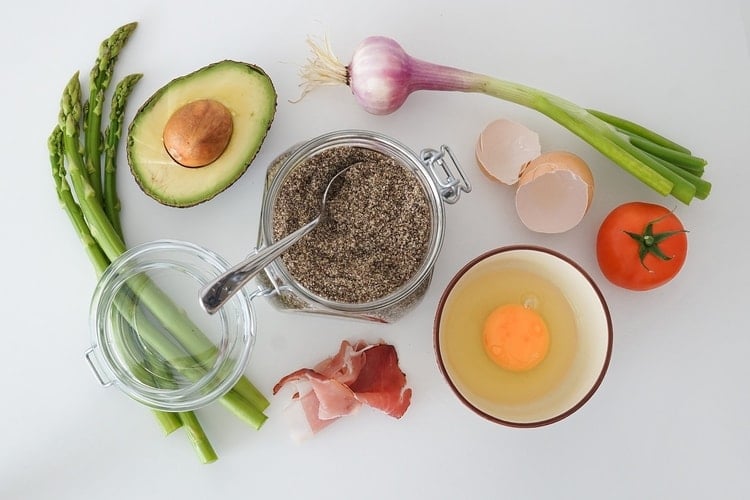
3. Reduce Exposure To Pesticides
Pesticides (and herbicides) are often estrogen-based and they also disrupt hormones.
A lot of fresh produce (and even, packaged food) contains pesticide residues.
One of the best things you can do to ease PMS symptoms is to eat more organic food. Even if you don’t go fully organic, you will start to notice improvements as you choose more organic foods over conventional ones.
4. Consume Fermented Soy
Unfermented soy products, like soy milk and tofu, have an estrogenic effect (i.e. they increase estrogen activity).
In addition, unfermented soy interferes with healthy thyroid function, which further worsens PMS symptoms (and overall hormone imbalance).
So,what’s the best way to have your soy and (safely) eat it too?
Add more unfermented soy products like nato, miso and tempeh into your diet. These foods allow you to enjoy all of soy’s health benefits, without the estrogenic side effects.
5. Keep Your Liver Healthy
In order to eliminate excess estrogen from the body, you need a healthy liver. An unhealthy liver means that excess estrogen stays in the body and contributes to estrogen dominance.
Use herbs like turmeric, milk thistle and dandelion to gently detox the liver and support liver health.
(Pssst…for more about how to improve liver health and balance your hormones, I’ve put together this post for you).
6. Eat more plant-based foods
Animal foods contain antibiotics and growth hormones, both of which disrupt your natural hormone balance.
In addition meats are difficult for the digestive system to break down and this added stress can wear down your body, and endocrine system, over time.
Give your body a break by eating more plant foods (ideally, organic!) to start improving your PMS symptoms.
Another benefit of plant foods is that they contain enzymes, trace minerals and phytochemicals that help to gently detox the body of excess estrogen.
Eat animal foods sparingly and choose organic, grass-fed, pasture raised varieties.
For fish, look for wild-caught fish only.
Choosing these types of animal foods will greatly reduce the number of hormone-disrupting compounds that you are exposed to.
7. Use A Water Filter
Tests done on some public water systems show traces of estrogen and hormone disruptors like PCBs.
Using a filter of any kind will help reduce – but not totally eliminate – the water toxins that contribute to PMS symptoms. I like using carbon filters and you can easily find them in stores and online.
8. Eat more fermented foods
One of the best ways to ensure healthy hormone levels is to eat fermented foods.
This is because the gut has a particular set of bacteria, called the estrobolome, that is reponsible for regulating estrogen levels.
But in order for the bacteria to do its job, there must be a healthy balance of “good” and “bad” bacteria.
So, consume more fermented foods like sauerkraut, kimchi, and plan yogurt to give your body the raw material that it needs.
9. Add more natural fats to your diet
The body uses fats to produce hormones.
In particular, the body needs cholesterol to make hormones, such as our adrenal hormones and our sex hormones.
When we eat a low-fat diet, or when we eat mainly processed fat, then we are automatically setting ourselves up for a whole host of hormone imbalance issues.
Start adding more fatty fish (salmon and sardines, for example), avocados, nuts, seeds and healthy oils (like coconut oil and olive oil) to your diet.
To boost your results, it’s a good idea to supplement with a natural oil like evening primsose oil.
This oil has a long history of being used for various types of female hormonal imbalance.
It contains essential fatty acids that bring balance to the body and provides significant relief from PMS symptoms.
10. Drink lots of water
The elimination of menstrual blood is basically equivalent to a detox because the body is actively eliminating something that it doesn’t need.
So, if you think of your monthly cycle as a natural detox, then you can start doing things that support detoxing.
One of the most beneficial and simplest things that you can do is to drink lots of water before and during your period.
Not sure how much water your body needs? Start by drinking half your body weight in ounces.
So, if you weigh 140 pounds, drink 70 ounces of water to ease PMS symptoms and flush out anything that is contributing to pre menstrual discomfort.
11. Eat plenty of raw fruits and veggies
Raw produce is full of nutrients, live enzymes and antioxidants, all of which help to nourish and detox the body.
Avoid eating packaged and/or processed food during your period because it is mainly dead food and tends to take away from your body. You want foods that are highly nourishing because that is what allows your body to restore its natural hormone balance.
Lifestyle Recommendations For PMS Symptoms

12. Use clean beauty products
Beauty products may temporarily make us look “good” but they are notorious for containing lots of hormone-disrupting compounds.
A lot of what we put on the skin gets absorbed into the bloodstream, so buy products from trustworthy brands that use more natural ingredients. Or play around with making your own DIY products.
Just like with food, anything that you do to reduce your exposure to toxic beauty products will definitely pay off when it comes to getting rid of PMS symptoms.
13. Switch to less toxic forms of birth control
Since birth control pills are usually estrogen-based, it’s a good idea to investigate alternatives that won’t put a strain on your endocrine system.
Talk to your doctor and partner to understand the pros and cons of all alternatives so that you can give your body a break from the estrogen that comes from things like birth control pills.
14. Develop a stress management routine
Chronic stress can exacerbate PMS symptoms because stress leads to the production of more cortisol.
As the production of cortisol goes up, the production of other hormones, like progesterone goes down.
When progesterone drops significantly, that means estrogen levels are now higher.
Whether you like to walk, dance, journal, meditate, listen to relaxing music or read, find activities that help you to relax and handle life’s demands.
15. Drop excess weight
Did you know that the body makes estrogen in our fat cells?
This means that the more excess weight we are carrying, the more fat cells we have, and the more estrogen we produce
So just by losing excess weight, you can start to improve your PMS symptoms and experience relief.
Now, just be careful not to reduce your calories dramatically or to avoid fat.
A low calorie diet puts stress on the body and results in more cortisol, while a low fat diet means you don’t have the raw materials for making hormones.
The smartest way to lose weight, is to focus on the quality of your food, not the quantity. This means eating more whole foods and less packaged/processed foods.
Now that you know the tips and tricks that can help eliminate your PMS symptoms, I’d love to hear from you…which parts of this article did you find helpful? When it comes to PMS symptoms, which treatments or strategies have helped you find relief? Leave your thoughts in the comments section!
